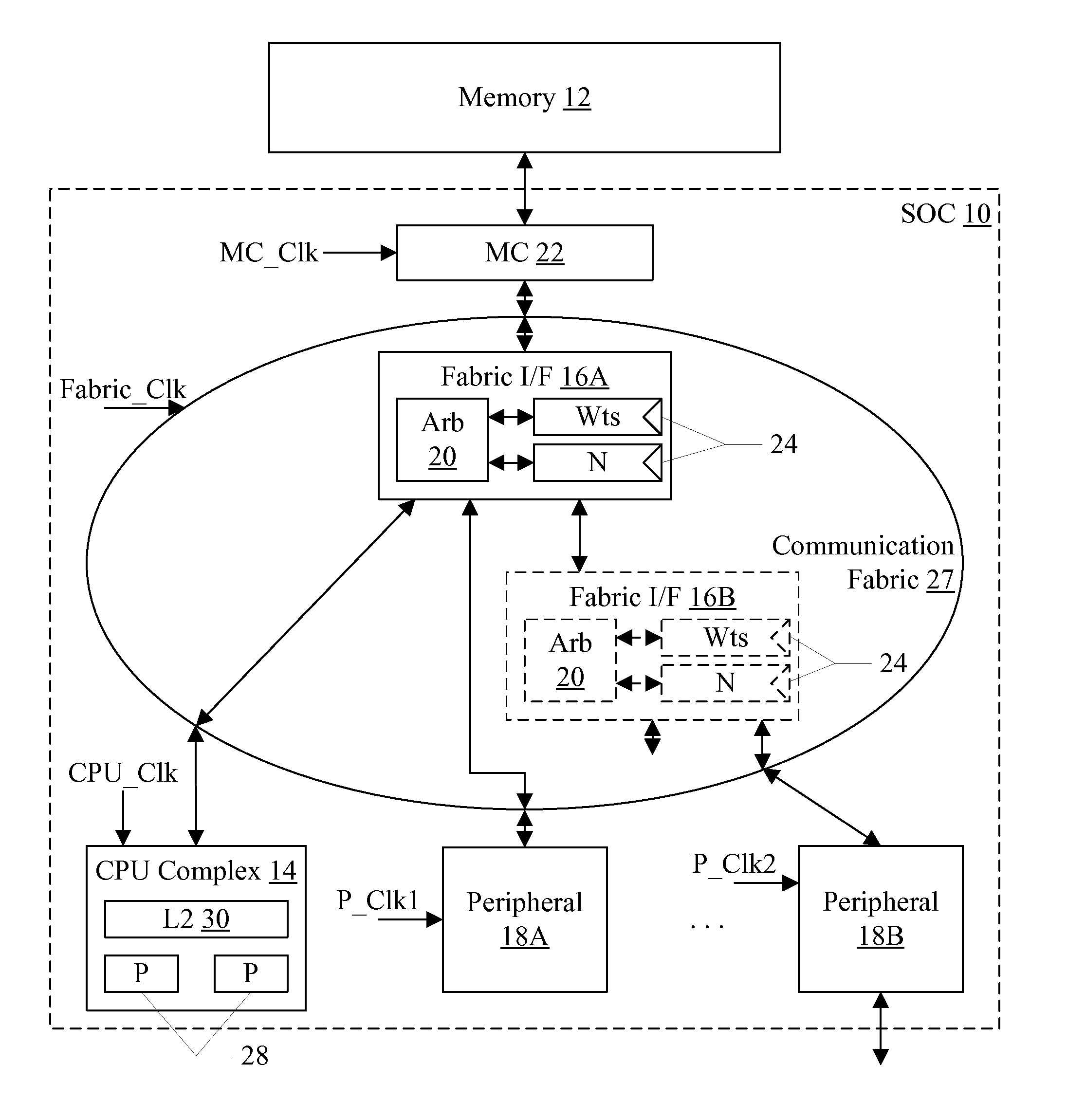Round Robin Arbiter Handling Slow Transaction Sources and Preventing Block
a technology of round robin and source, applied in the field of communication fabric arbiters, can solve problems such as sources' problems, conflict can occur, and provide equal opportunity to all sources may not be the best overall scheme for performance, so as to prevent the reload of weights, prolong the validity of the transaction, and effectively “stretch” the transaction
- Summary
- Abstract
- Description
- Claims
- Application Information
AI Technical Summary
Benefits of technology
Problems solved by technology
Method used
Image
Examples
Embodiment Construction
[0022]Turning now to FIG. 1, a block diagram of one embodiment of an SOC 10 is shown coupled to a memory 12. As implied by the name, the components of the SOC 10 may be integrated onto a single semiconductor substrate as an integrated circuit “chip.” In some embodiments, the components may be implemented on two or more discrete chips in a system. However, the SOC 10 will be used as an example herein. In the illustrated embodiment, the components of the SOC 10 include a central processing unit (CPU) complex 14, peripheral components 18A-18B (more briefly, “peripherals”), a memory controller 22, and a communication fabric 27. The components 14, 18A-18B, and 22 may all be coupled to the communication fabric 27. Each component 14, 18A-18B, and 22 and the communication fabric 27 may also have an associated clock or clocks, represented as a clock input in FIG. 1: CPU_Clk for the CPU complex 14, P_Clk1 for the peripheral 18A, P_Clk2 for the peripheral 18B, Fabric Clk for the communication ...
PUM
 Login to View More
Login to View More Abstract
Description
Claims
Application Information
 Login to View More
Login to View More - R&D
- Intellectual Property
- Life Sciences
- Materials
- Tech Scout
- Unparalleled Data Quality
- Higher Quality Content
- 60% Fewer Hallucinations
Browse by: Latest US Patents, China's latest patents, Technical Efficacy Thesaurus, Application Domain, Technology Topic, Popular Technical Reports.
© 2025 PatSnap. All rights reserved.Legal|Privacy policy|Modern Slavery Act Transparency Statement|Sitemap|About US| Contact US: help@patsnap.com



